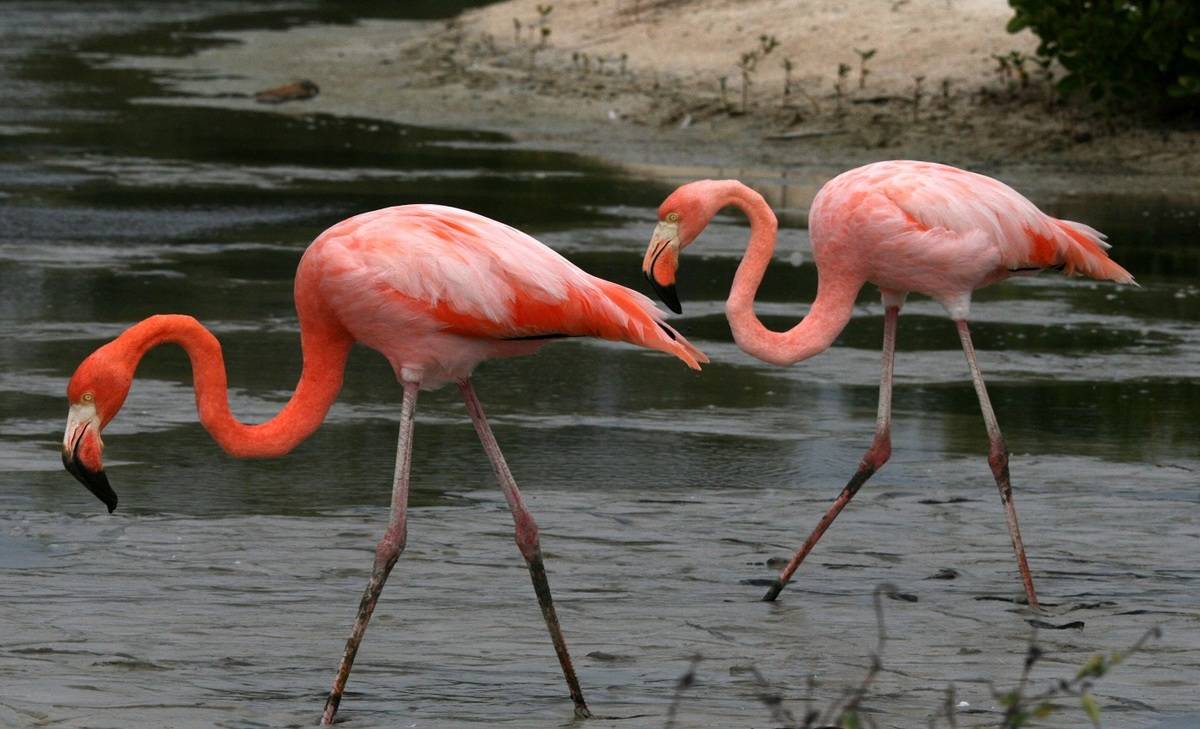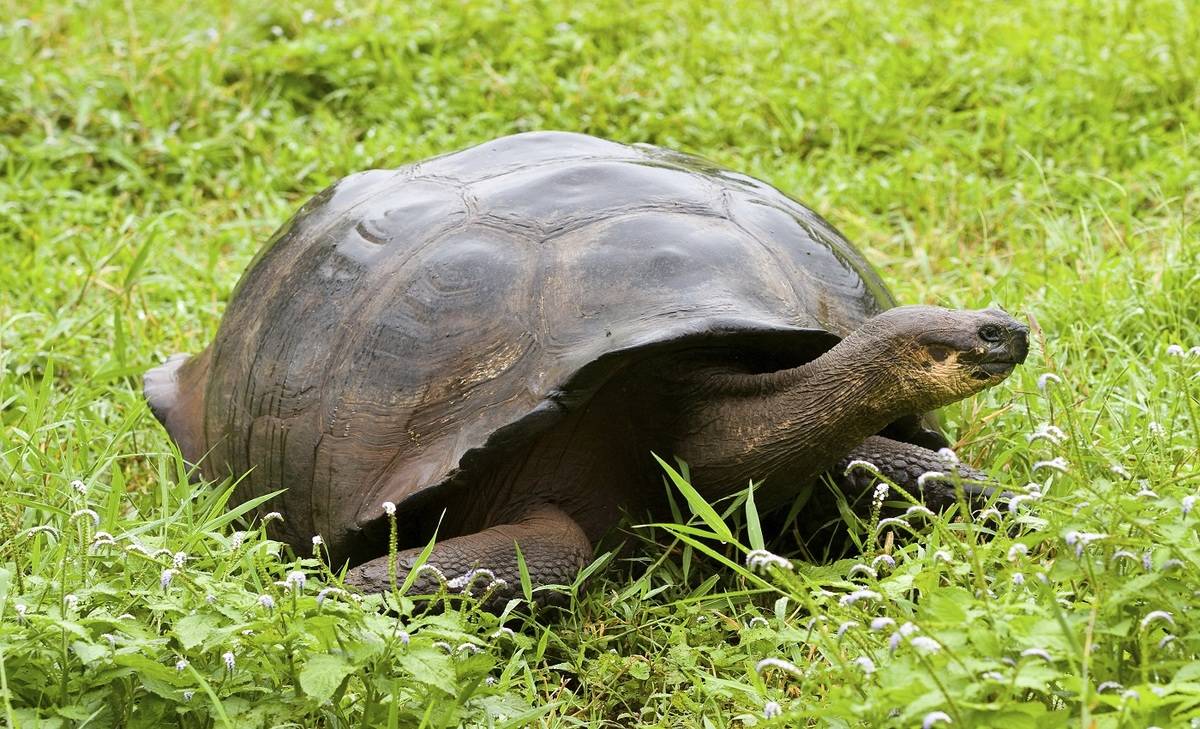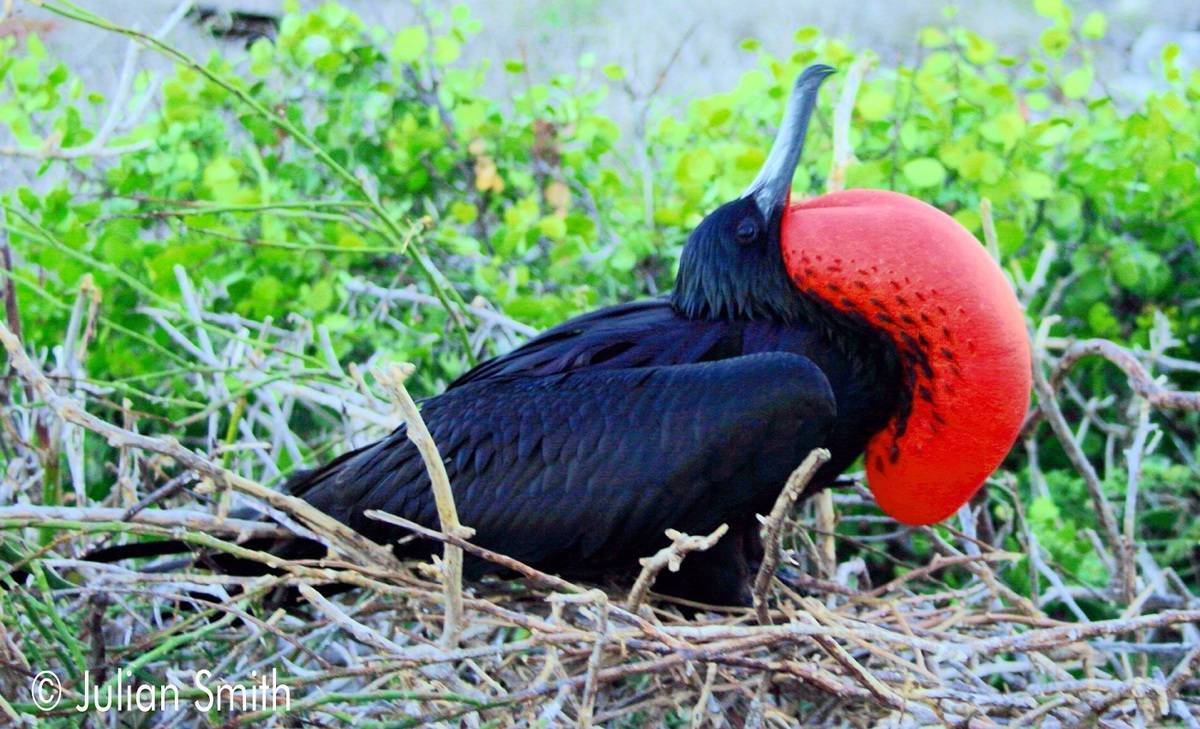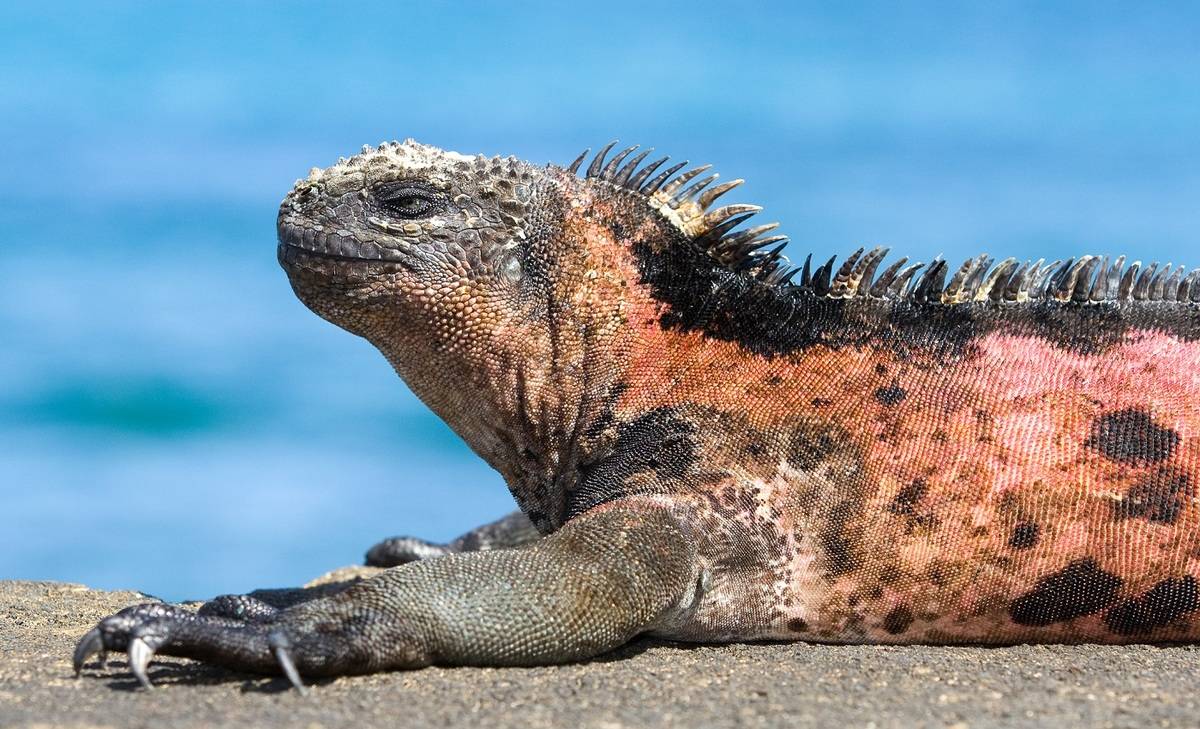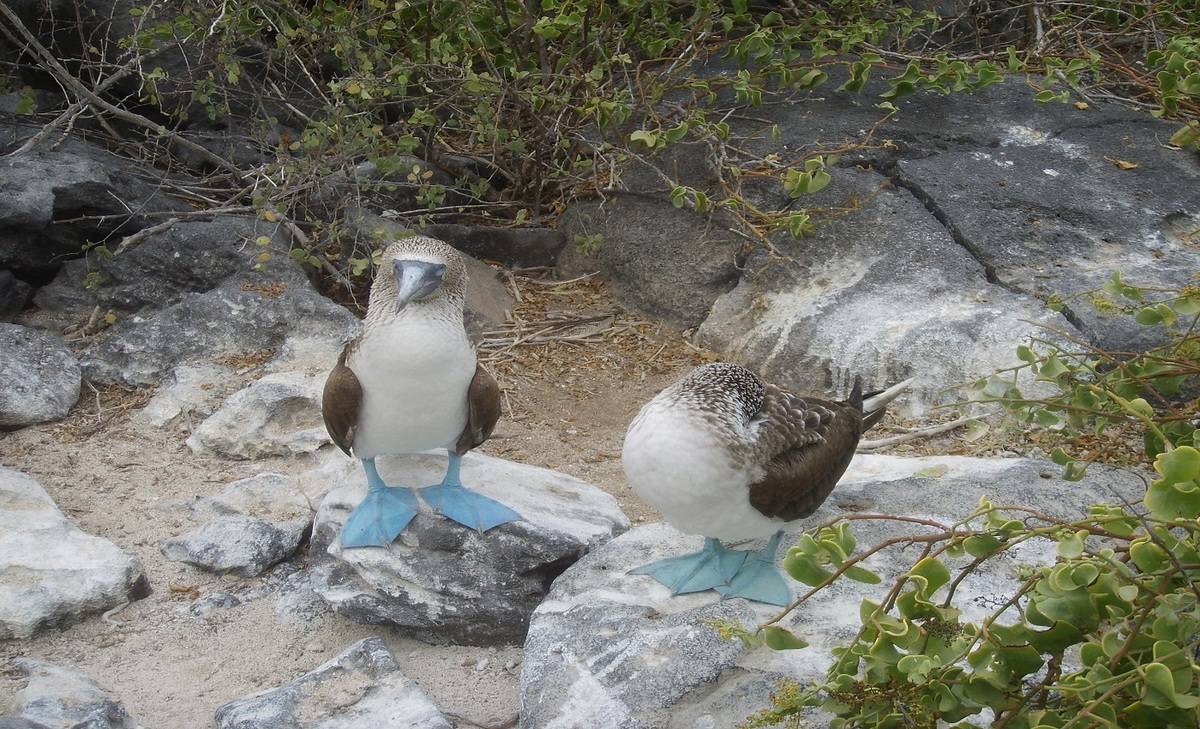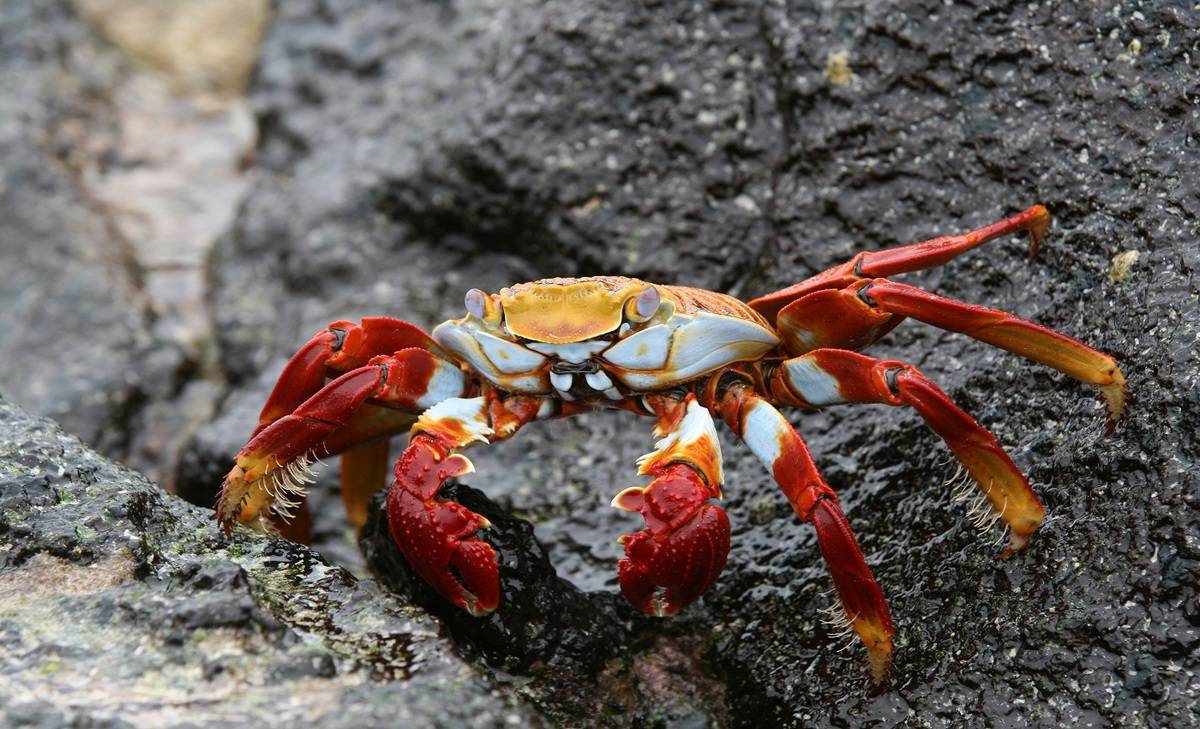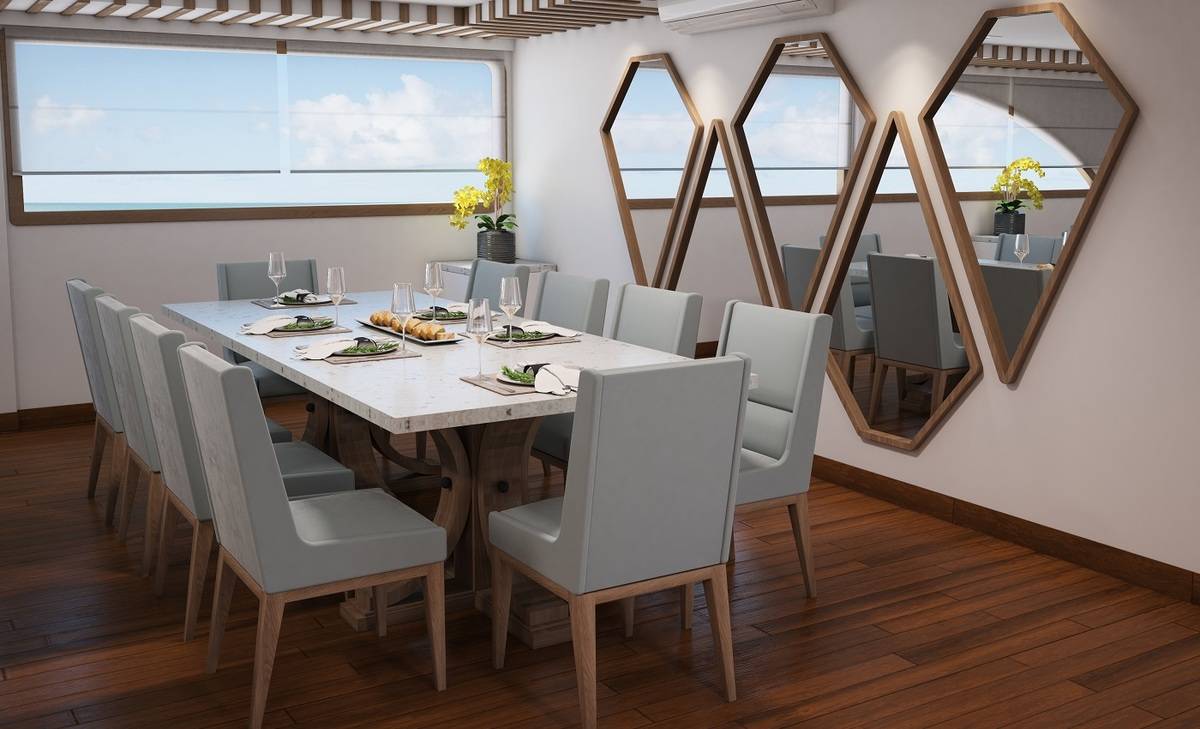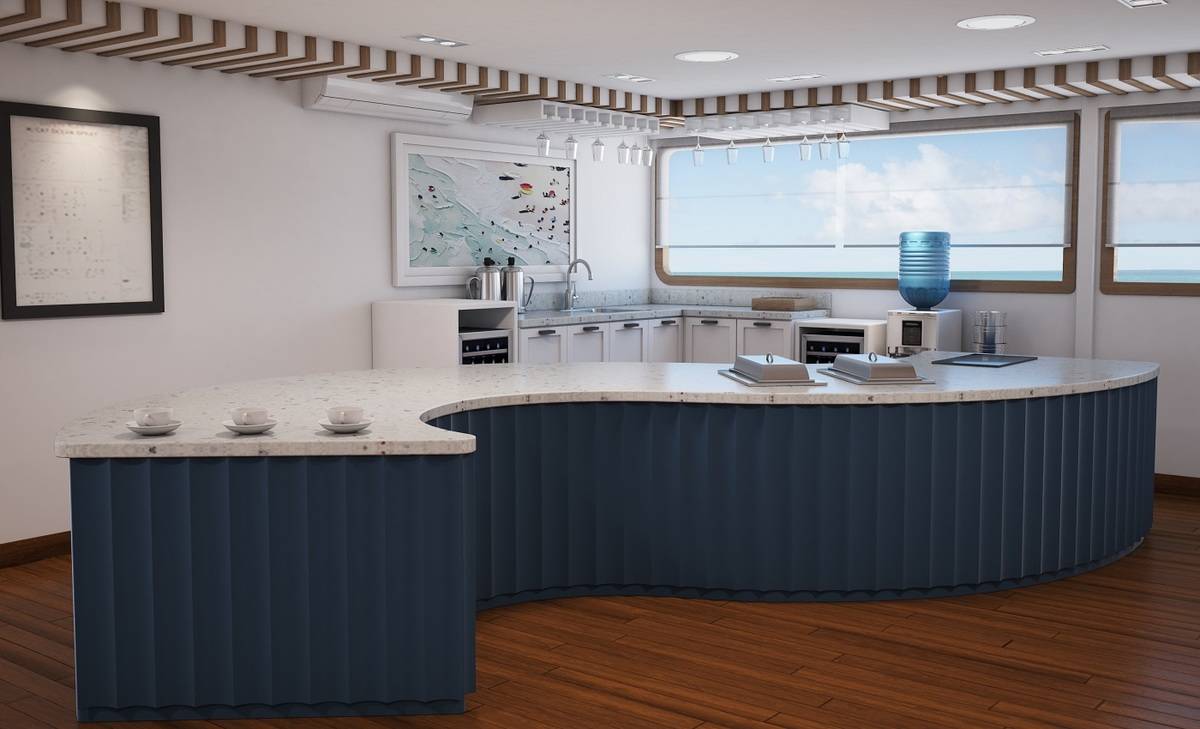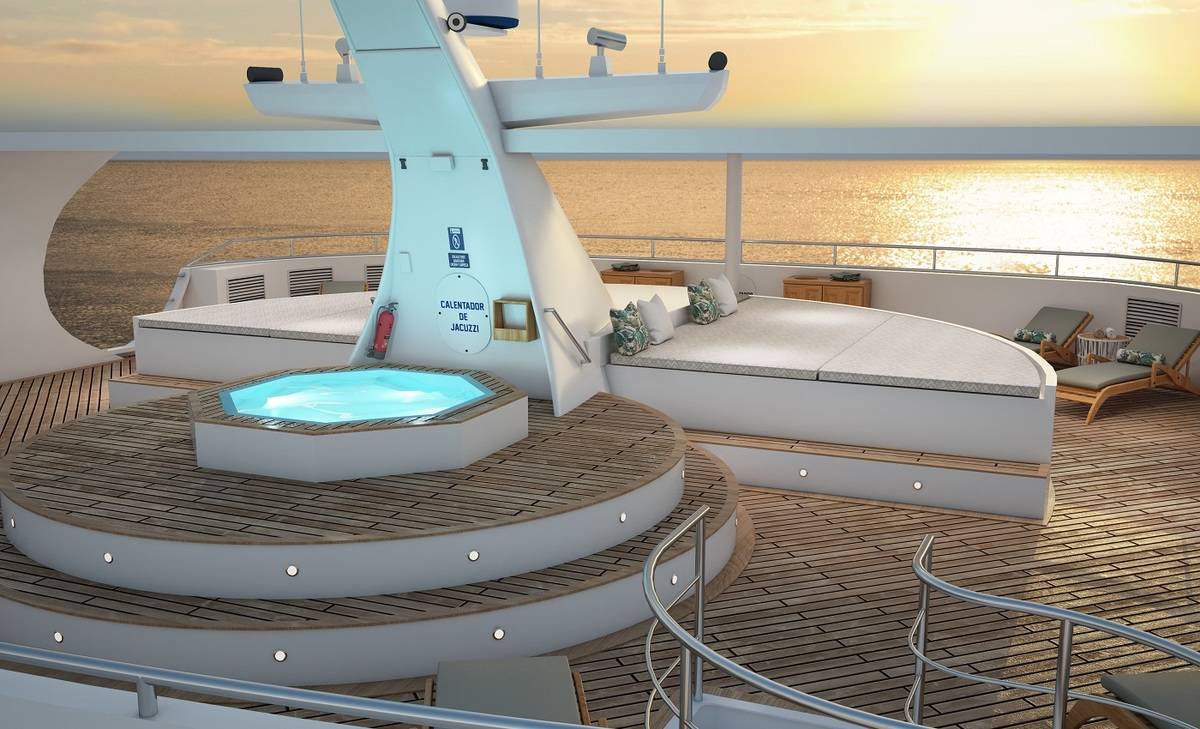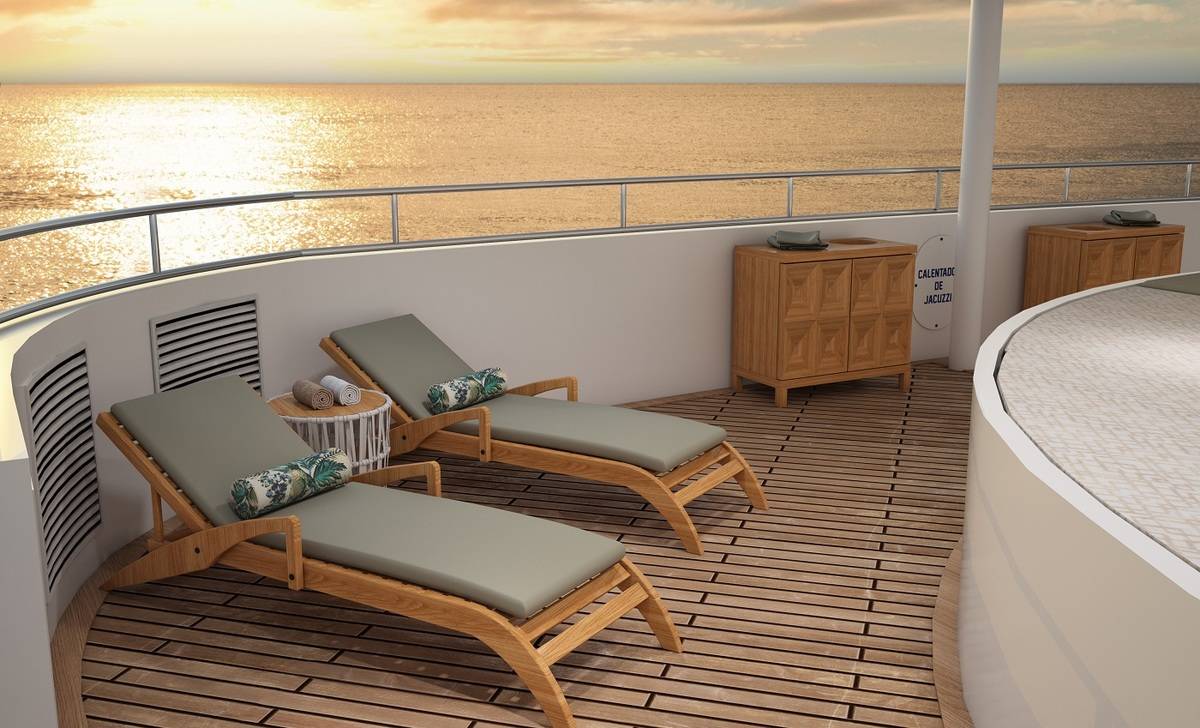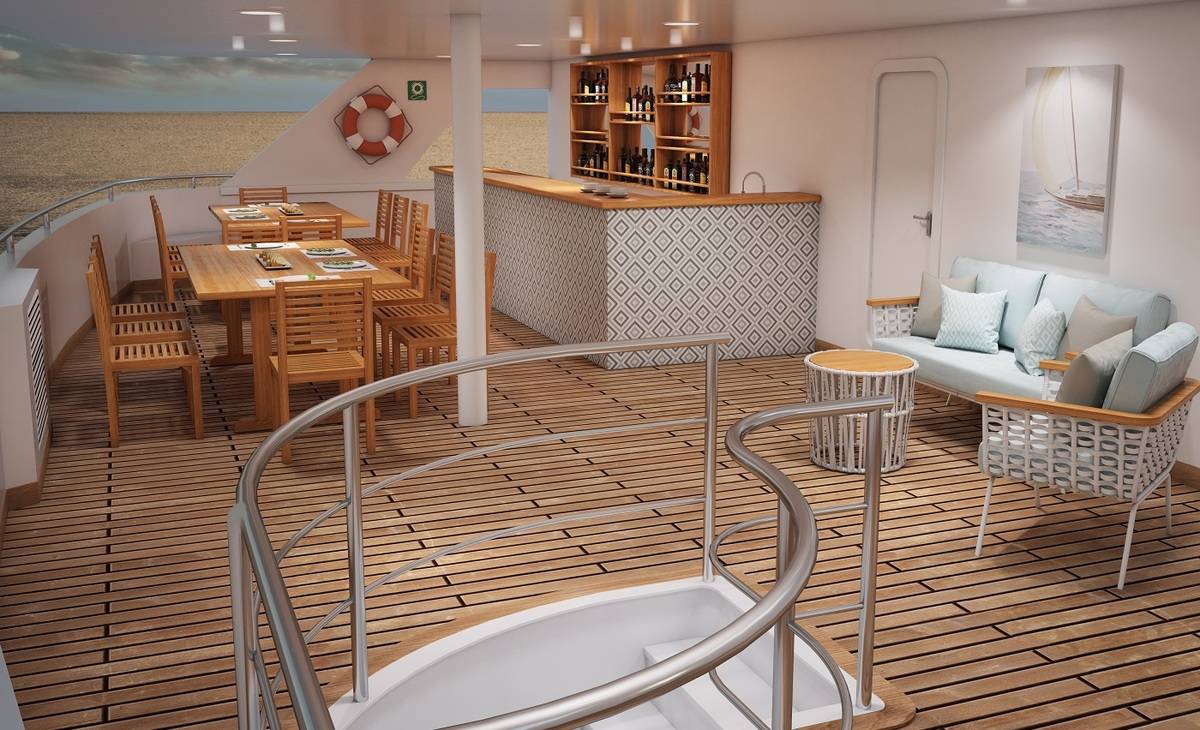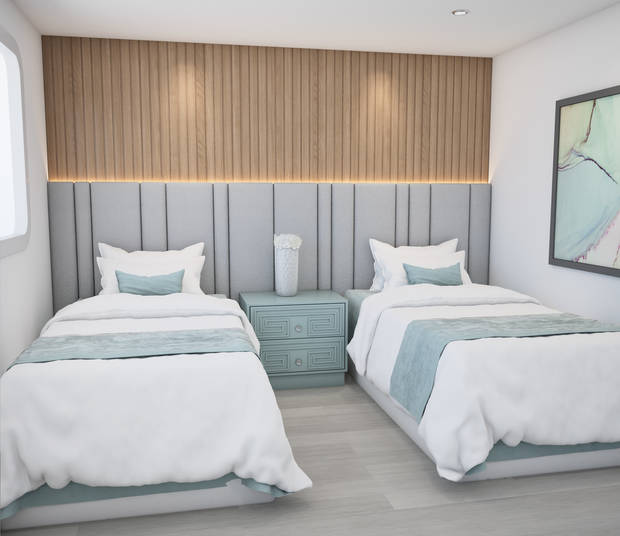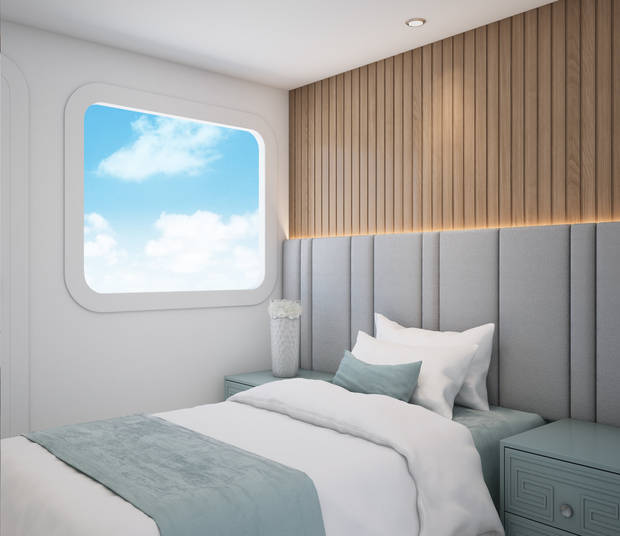West to East Galapagos Islands
8 Days - Ocean Spray
Enjoy a comprehensive circuit of the incredible Galapagos Islands onboard the luxurious Ocean Spray catamaran. Ocean Spray boasts some of the largest cabins on any small yacht in the Galapagos and 8 days will be spent exploring the central and western islands which are home to an incredible array of wildlife and spectacular scenery.

Home » 8 Day Ocean Spray: West to East Galapagos Islands
Itinerary Highlights
- Explore the Galapagos Islands in luxurious style on a catamaran with maximum of 16 passengers onboard
- Visit the impressive Charles Darwin Research Station and meet Galapagos tortoises
- Each guided excursion features walks, kayaking, snorkeling, paddle boarding, dinghy rides, wildlife observation, and many more surprises
- Discover the amazing wildlife on Isabela Island. Sights might include sea lions, sea turtles, various shorebirds, marine iguanas, pelicans, sally lightfoot crabs, tropical fish, Galapagos shark and many more.
Itinerary Overview:
- Day 1: Baltra - Chinese Hat Island
- Day 2: Vicente Roca Point - Espinosa Point
- Day 3: Tagus Cove - Urbina Bay
- Day 4: Elizabeth Bay - Moreno Point
- Day 5: Charles Darwin Station - Highlands
- Day 6: South Plaza - Santa Fe Island
- Day 7: Suarez Point - Gardner Bay - Osborn Islet
- Day 8: Interpretation Center - La Galapaguera - Baltra
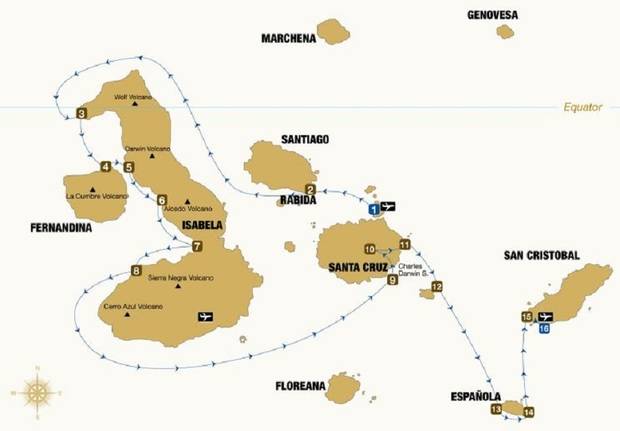
Day 1: Baltra - Chinese Hat
After arrival to Baltra airport and passing through immigration and baggage claim you will be met by Ocean Spray staff and transferred to the yacht. You will be shown to your cabin where you will have some time to settle in before lunch and a welcome briefing.
In the afternoon you will make your first stop at Chinese Hat. This site offers rare, up close viewing of Galapagos wildlife and well-preserved remnants of fragile volcanic rock that can't be found in such a unique condition anywhere else. The island is named after the similarity of an Asian type of hat. Here you can see American Oystercatchers and Galapagos Penguins swimming along the shores.
Day 2: Isabela - Vicente Roca Point - Fernandina - Espinosa Point
This morning you will visit Vicente Roca Point, which has outstanding geological formations and is a great place to see various bird species. Because this visitor site is located on the western area of the island, the Cromwell Current provides cold water that carries many nutrients for both land and aquatic species, offering the chance to see amazing feeding frenzies.
In the afternoon you will continue to Fernandina. As one of the most pristine islands in the archipelago, Fernandina has never had a foreign species invade. It is also the most active island and farthest west. Espinosa point is the only visitor site on the entire island. Here you can see marine iguanas, Galapagos hawks and enjoy a hike and/or snorkeling activity at one of the most natural, unspoiled sites in the entire world.
Day 3: Isabela - Tangus Cove and Urbina Bay
If you like historic remnants, then you will enjoy finding what was left behind by pirates and sailors in the 1800s on Isabela Island in Tangus Cove. This site was one of their preferred pit stops while traveling the seas. The hike here will provide incredible views of the cove and on the other side the mangrove forest where the last 35 pairs of Mangrove finches thrive.
Millions of years ago, Urbina Bay was once laying on the ocean floor. Volcanic uplifts caused it to rise and now it is occupied by sea lions, land iguanas and flightless cormorants. It is a great place to enjoy some free time on the beach or the guide may suggest a hike.
Day 4: Isabela - Elizabeth Bay and Moreno Point
Elizabeth Bay site is visited by panga only as the park authorities have no authorized landing in order to protect the island. While in the panga you can appreciate a large abundance of marine life that can be seen in the clear waters. It is great for snorkeling.
The beautiful rocky shores of Moreno Point offers a plethora of birds to be seen. It is truly a birders delight. The main attraction are the coast lagoons where white tipped sharks can be seen and the panoramic views of Sierra Negra and Cerro Azul volcanoes cannot be missed.
Day 5: Santa Cruz - Charles Darwin Research Station and Highlands
The Charles Darwin Research Station is one of the Galapagos Island’s most important sites for visitors. It is a research facility that has an extensive collection of Galapagos plant life specimens carefully preserved and also acts as a biological research station and active breeding center operated by the Charles Darwin Foundation. Their biggest conservation efforts are to one day eliminate all invasive and non-native plants and animals destroying endemic species within the islands.
The highlands are located in the northern part of Santa Cruz and can reach elevations up to 1500 meters. This area is rich with hills, ferns, volcanoes and wildlife. A great contrast to the molten lava hardened beaches and rocky areas of other islands already seen. It is home to giant tortoises, mockingbirds, finches and many other species.
Day 6: South Plaza Island and Santa Fe Island
South Plaza is one of the smallest islands with a visitor site, but is home to an incredible amount of diverse flora and fauna. It has a large population of Sesuvium plants like the prickly pear cactus tree that is an important source of food for the land iguana. Just a few years ago mice were finally eradicated from the island, helping the population of land iguanas grow healthily once more. The amazing colors of the turquoise waters against the black lava create a setting for amazing photography opportunities.
Santa Fe is home to the endemic Santa Fe iguana. The island was created by a volcanic uplift that now hosts a forest of Opuntia and Palo Santo trees. It is a picturesque island with two different trails, one leading to a scenic viewpoint and the other leading to a small beach. Giant tortoises were once native here but went extinct after pirates and sailors took them aboard as a source of food.
Day 7: Espanola - Suarez Point, Gardner Bay and Osborn Islet
Suarez Point is a phenomenal site where you will get to see many of Española Island's endemic species. The trail will pass by the only Waved Albatross breeding site in all of Galapagos. If you are lucky you might see a young albatross take off for its first flight for up to five years at sea. Older birds stay at sea for months at a time, only coming back to breed. They have the same mate for life and will meet each other each year, only here to reproduce. Other species that can be seen are marine iguanas that stay brightly colored year round, Galapagos doves, Nazca boobies, blue-footed boobies, swallowtailed gulls, red-billed tropic birds, and Darwin finches.
In the afternoon you will visit Gardner Bay and Osborn Islet. This white sandy beach is home to a large colony of sea lions and incredibly blue and turquoise waters. Three different finches can be seen, as well as the Española mockingbird. Over time, the mockingbird must have been offered water or food from tourists and now they have no fear of walking on your things or landing very close to you.
It is so important not to feed or touch the animals. It can disrupt their normal behaviors and threaten their future.
Day 8: San Cristobal - Interpretation Centre and Galapaguera
The Interpretation Center has been open to the public since 1998, offering extensive knowledge about the history of Galapagos. San Cristobal is also the island where Charles Darwin first landed on. It is now home to the capital of Galapagos and houses many government offices, as well as part of the Ecuadorian Navy. Giant tortoises are bred at the Galapaguera and roam in a semi-natural habitat created by the center.
After this last visit, transfer to San Cristobal airport for your return flight to mainland Ecuador.
Cabin Details
Double or Twin suite
2 single beds or 1 king bed, private balcony, en-suite bathroom, air conditioning, hairdryer, safety deposit box, electrical outlets. vanity table and sitting area.
Single Cabin
18m², single bed, private balcony, en suite bathroom, air conditioning, hairdryer, safety deposit box, electrical outlets. vanity table and sitting area.
Ocean Spray Deckplan
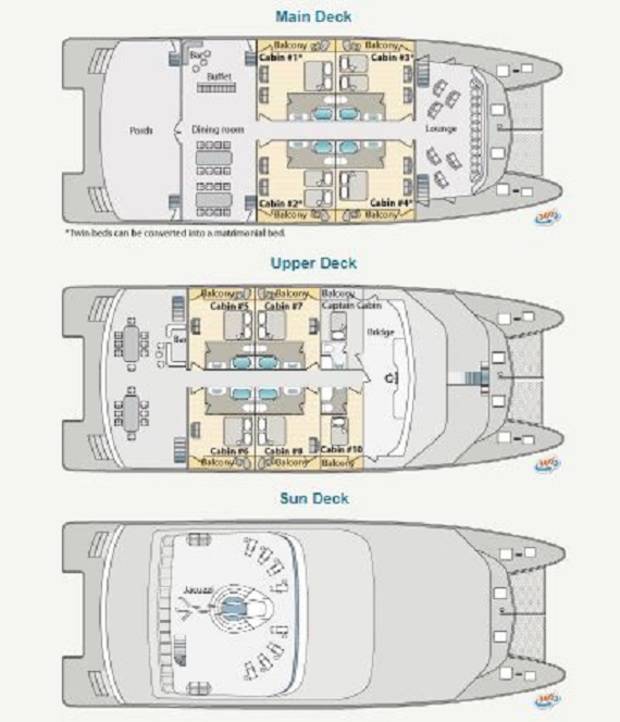
Specifications
- Year Of Construction: November 2011
- Type: Power Motor Catamaran
- Length: 113ft / 34mts
- Beam: 43ft / 13mts
- Draft: 4ft / 1mts
- Gross tonnage: 170 tons
- Capacity: 16 passengers
- Cabins: 9
- Social Areas: Dining room, sun deck, library
- Main engines: MTU-DDC Series 60
- Generators: John Deere 4.5 lt
- Max speed: 15 knots
- Electricity: 110 volts AC / 60 Hz
- Exterior: GFRP (fibre reinforced polymer)
- Machinery: John Deere 4045TFM50 / 400HP @ 1800 RPM
- Life Rafts: 2 x 20-man life crafts
- Crew: 11
- Naturalist Guide(s): 1
- Snorkel Equipment Included
- Wetsuit Rental Included
- Kayak Rental Included
Whats included?
- Transfers airport/yacht/airport in Galapagos
- Airport reception and assistance
- Accommodation with private facilities
- Guided expeditions according to the itinerary
- Top bilingual National Park guide (English / Spanish)
- Cruise Service Officer
- Activity daily briefing
- All meals and snacks, soft drinks and juices
- Captain’s welcome and farewell cocktail
- Supplied expedition gear (transparent sea kayaks, stand-up paddle boards, snorkelling equipment, wet suits, water container, expedition binoculars, action camera
What’s not included?
- Round trip to Galapagos
- Galapagos National Park Entrance fee (US$100 – subject to change)
- Transit Control Card (US$20 – subject to change)
- Alcoholic and bottled beverages
- Gratuities for guide and crew
- Travel and health insurance
- Micro SD Card

